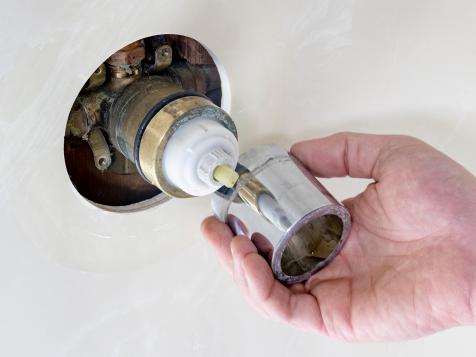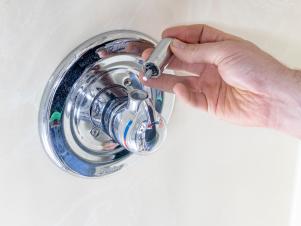Presented here underneath you can get a lot of dependable material related to How-To Guide On Fixing A Leaking Tap Or Faucet Step.

Intro
A leaky faucet is not only aggravating but can additionally waste a substantial amount of water and bring about boosted utility expenses. In this detailed guide, we'll walk you through the process of dealing with a dripping tap, permitting you to save water and money while keeping your plumbing system.
Collecting Devices and Products
Prior to you start, gather the needed devices and materials for the repair service. You'll generally need a flexible wrench, screwdrivers, replacement washing machines or seals, plumber's tape, and a cloth or towel to clean up any kind of spills.
Shutting Down Water
Locate the shut-off shutoff for the affected faucet and transform it clockwise to turn off the water supply. If you're not able to find the shut-off valve, you might need to shut down the major supply of water to your home.
Dismantling the Tap
Utilize a screwdriver to remove the manage of the tap, revealing the interior components. Relying on the sort of tap, you might need to unscrew a cap or collar to access the valve assembly.
Evaluating for Damages
Once you have actually revealed the valve setting up, inspect it for any type of indicators of damage or wear. Typical wrongdoers of a leaking faucet include worn-out washers, O-rings, or seals.
Replacing Faulty Components
If you identify any broken or damaged components, carefully remove them utilizing a wrench or pliers and replace them with brand-new ones. Be sure to make use of the appropriate size and type of substitute components for your faucet.
Rebuilding the Faucet
After replacing the malfunctioning parts, carefully reconstruct the tap in the reverse order of disassembly. Make sure that all components are appropriately lined up and tightened to stop future leakages.
Examining for Leaks
As soon as the tap is reassembled, turn the water system back on and examine the faucet for leakages. If you notice any type of leaks, verify the links and tighten them as needed.
Making Sure Proper Performance
After verifying that the faucet is leak-free, test its performance by turning it on and off several times. Make certain that the tap runs smoothly and without any uncommon noises or resistance.
Cleaning Up
Ultimately, tidy up any kind of particles or spills from the repair work process and deal with any type of old or damaged elements appropriately. Leaving the workplace spick-and-span ensures a professional surface to your fixing.
Conclusion
Dealing with a leaking tap is a fairly easy do it yourself task that can save you money on water costs and stop further damages to your plumbing system. By following this step-by-step guide, you can tackle the fixing with confidence and appreciate the benefits of a leak-free faucet.
Fixing a Leaking Tap: Causes, Solutions, and Water Conservation
Causes and Signs
Worn-Out Washers: The tap washer, rubber or metal, creates a seal within the tap assembly. Over time, the old washer can deteriorate, leading to water seepage and a dripping tap. High Water Pressure: Excessive water pressure can strain tap components, causing leaks. The forceful water flow exerts pressure on the washers and other sealing mechanisms, resulting in a dripping tap. Faulty O-Rings: O-rings, usually made of rubber, provide a watertight seal between moving parts of the tap. If the O-rings become worn or loose, they can cause water to leak, resulting in a dripping tap and potential water damage to your property. Signs of a Dripping Tap
Audible Dripping Sounds: If you hear the sound of water droplets hitting the sink or basin, it’s a clear indication of a dripping tap. Puddles or Stains: Notice any puddles of water or stains around the tap area or on the sink surface. These signs suggest a dripping tap that requires attention. Reduced Water Flow: A dripping tap can affect the overall water flow, resulting in reduced pressure when using the tap. Gather the Necessary Tools
Adjustable spanner Screwdriver – flathead or Philips’s head New washers Towels or rags Turn Off the Water Supply
Find the isolation valve beneath the sink or by the tap and turn it clockwise to shut off the water supply.
Disassemble the Tap
Use a screwdriver to carefully remove the tap handle, exposing the internal components. Take note of the order and arrangement of the parts as you disassemble the tap. This will aid in reassembling it correctly later on. (We recommend taking photos on your phone for a no-fuss solution).
Inspect and Replace the Washer
Inspect the washer located at the bottom of the tap assembly. If it appears worn out or damaged, replace it with a new washer of the correct size and type. This simple replacement can often resolve the dripping tap issue.
Tips for Responsible Water Usage
Regular Inspection and Maintenance: Conduct periodic inspections of all taps in your home to identify potential leaks or drips. Timely repairs prevent water wastage and maintain the efficiency of your plumbing system. Install Water-Efficient Taps: Consider replacing old taps with water-efficient models that are designed to minimise water consumption. Look for taps equipped with aerators and flow restrictors to regulate water flow without compromising functionality. Conscious Water Usage: Develop mindful habits such as turning off the tap while brushing your teeth or soaping your hands. Additionally, use full loads when running dishwashers and washing machines to maximise water efficiency. Monitor Your Water Bill: Keep track of your water consumption by regularly monitoring your water bill. Any sudden increases may indicate a leaking tap or other issues that require attention. When to Seek Professional Help
Persistent Leaks: If your attempts to fix the dripping tap are unsuccessful or the problem keeps recurring, it may indicate an underlying issue that requires professional attention. Complex Repairs: In cases where the tap assembly is intricate, or the repair involves specialised knowledge, it’s advisable to seek professional help to ensure the problem is resolved effectively. https://proudplumbingandgas.com.au/blog/a-complete-guide-to-fixing-a-leaking-tap/

As an avid reader on How to Fix a Leaking Tap Without Getting Professional Help, I thought sharing that piece of content was a good idea. Sharing is caring. You won't know, you will be doing someone a favor. Thanks for taking the time to read it.
Automated Marketing